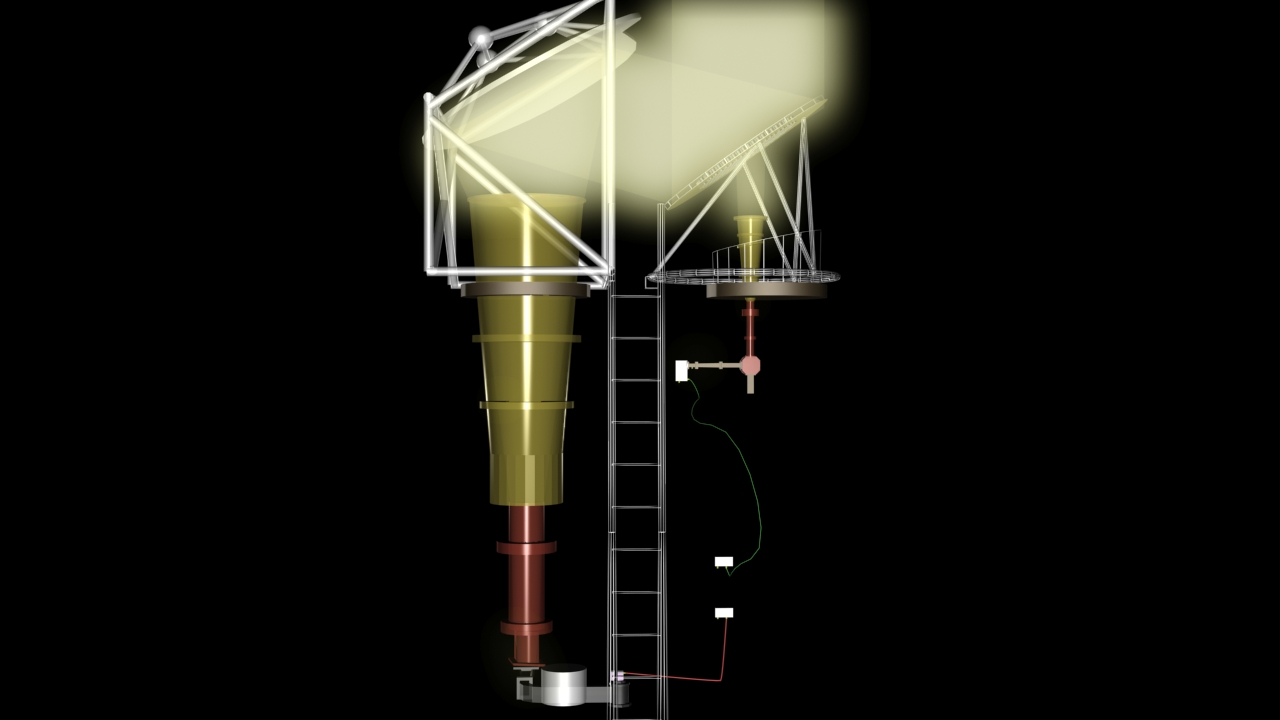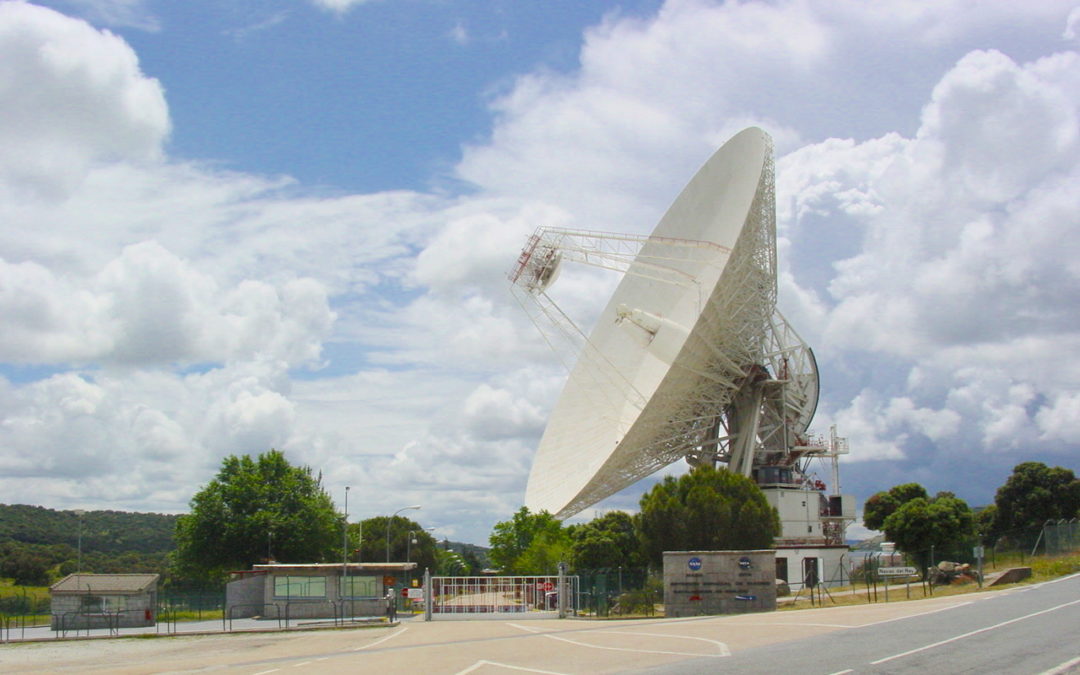Our latest brand new 3D model is the DSS-61 antenna from the PARTNeR project at NASA’s MDSCC (Madrid Deep Space Communications Complex).
MDSCC is one of the three ground stations that constitute to NASA’s Deep Space Network (DSN), which is in charge of the communication with NASA’s spacecraft in space. Each station is 120 degrees apart on Earth so that at any time, any satellite in deep space is able to communicate with at least one ground station. The stations are operated 24 hours a day, seven days a week, 365 days per year, so no information is ever lost. To communicate with satellites the stations rely on several antennas, some of them, like DSS-63, with up to 70 meters in diameter. Of course, MDSCC’s main role is to contribute to NASA’s DSN, but a secondary field of activity in the complex is the research in radioastronomy, as each antenna can also be used as a radiotelescope, able to capture and record the energy radiated by many objects in space.
MDSCC was built in 1964, its first antenna started working the following year and the complex has been growing ever since. Some legendary missions such as the Voyagers communicated with MDSCC. Even if its owned by NASA, the complex was first operated by INTA, then by INSA, and since 2012 is being operated by Isdefe. However, the center being operated by Spanish companies is not the only benefit resulting from the agreement between the USA and Spain to host MDSCC in Robledo de Chavela. Namely, the Host Country Program managed by the CAB (Astrobiology Centre) associated to the NASA Astrobiology Institute offers to Spanish astronomers the opportunity to observe with MDSCC’s antennas during 3% of the total available time. Despite not having much observation time, important discoveries have been made by Spanish physicists with these antennas. Maby the most known and important one is the first ever detection of a water maser emission from a planetary nebula.
Still, the Host Country Program is not the only way Spaniards may access MDSCC’s antennas. Young astronomers at school or university may also use these antennas through the PARTNeR program. PARTNeR is an educational project resulting from the collaboration between the North American Space Agency (NASA) and the National Institute of Aerospace Technology (INTA). The AstroBiology Center (CAB) from CSIC-INTA is in charge of the PARTNER Coordination Center through its Scientific Culture Unit. The Coordination Center is located at the LAEFF (Laboratory of Stellar Astrophysics and Fundamental Physics) campus at the ESA‘s ESAC facilities in Villafranca del Castillo (Madrid). From there, the CAB staff associated with the project, manage the antenna and supervise the implementation of the project in schools, advising users about scientific, technical or didactic knowledge related to PARTNeR and radioastronomy.
The PARTNeR project uses the DSS-61 antenna, whose 3D model we have created. The model, which may be adapted for 3D-printing, was originally designed to be visualized in 360º through HTML. The purpose of this visualization is educational, so besides showing astonishing details in the exterior structure, it includes all the inner instruments through which radiowaves-paths can be seen. You may check below some snapshots of this 360º visualization, at a glance you will see how useful these may be in educational environments.



Cover Image © mapio.net
